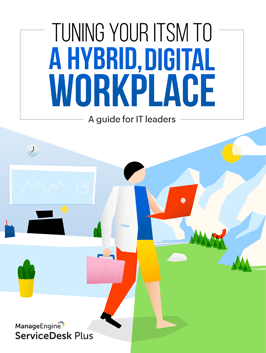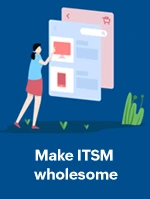Last updated on: April 01, 2022
In this chapter, we will discuss the different types of changes and their key differentiators.
Types of changes in ITIL
Not all changes are the same, as some have different requirements. Some changes need to be implemented as soon as possible, some need approval from the organization's higher-ups, and some are just normal changes that are implemented on a weekly basis.
According to ITIL, changes can be broadly divided into three types: standard, normal, and emergency changes.
Standard changes:
These are preapproved changes that are low-impact, well-known, and documented. Standard changes require a risk assessment and authorization when implemented for the first time, but subsequent implementations can be done without these precautions as long as the change hasn't been modified.
Example: Replacing a printer's ink cartridge
Normal changes:
A normal change needs to follow the entire change process; it should be scheduled, have its risk assessed, and be authorized. Normal changes include both minor (low to medium impact and urgency) and major changes (high impact and urgency). All changes that aren't standard or emergency ones should be treated as normal changes and adhere to the change process.
Example: Moving on-premises services to the cloud
Emergency changes:
Emergency changes have high impact and urgency, requiring expedited assessment, approval, and implementation to get services up and running as soon as possible. Modifications to components that affect business operations, and therefore cause downtime, are treated as emergency changes.
Example: Primary server failure, data center disruption, emergency patch for security vulnerability
FAQs

Changes can be broadly divided into three types: standard, normal, and emergency changes.
These are preapproved changes that are low-impact, well-known, and documented.
Example: Replacing a printer's ink cartridge
A normal change needs to follow the entire change process; it should be scheduled, have its risk assessed, and be authorized. Normal changes include both minor (low to medium impact and urgency) and major changes (high impact and urgency).
Example: Moving on-premises services to the cloud
Emergency changes have high impact and urgency, requiring expedited assessment, approval, and implementation to get services up and running as soon as possible.
Examples: Primary server failure, data center disruption, emergency patch for security vulnerability
A normal change needs to follow the entire change process; it should be scheduled, have its risk assessed, and be authorized. Normal changes include both minor (low to medium impact and urgency) and major changes (high impact and urgency).
Example: Moving on-premises services to the cloud
A normal change needs to follow the entire change process; it should be scheduled, have its risk assessed, and be authorized. Normal changes include both minor (low to medium impact and urgency) and major changes (high impact and urgency). All changes that aren't standard or emergency ones should be treated as normal changes and adhere to the change process.
Example: Moving on-premises services to the cloud
Standard changes on the other hand are preapproved changes that are low-impact, well-known, and documented. Standard changes require a risk assessment and authorization when implemented for the first time, but subsequent implementations can be done without these precautions as long as the change hasn't been modified.
Example: Replacing a printer's ink cartridge






